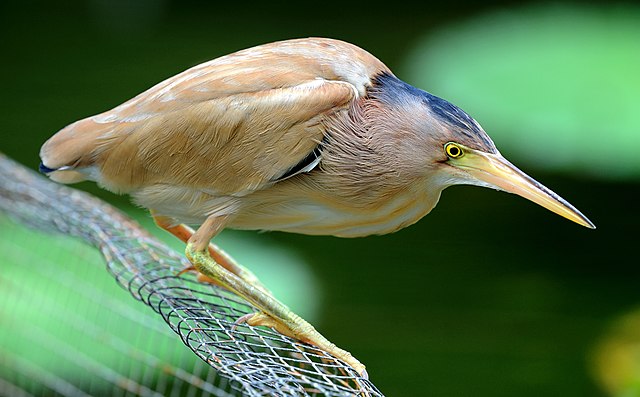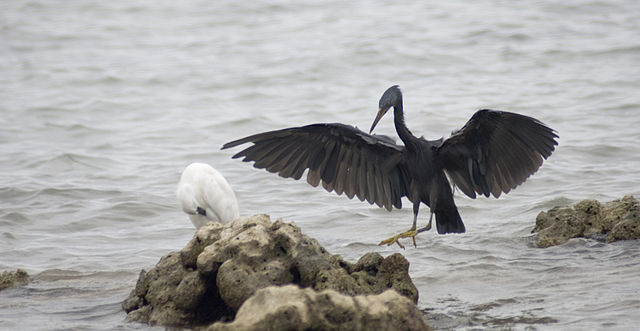The great egret (Ardea alba), also known as the common egret, large egret, or great white egret or great white heron, is a large, widely distributed egret. The four subspecies are found in Asia, Africa, the Americas, and southern Europe. Recently, it has also been spreading to more northern areas of Europe. Distributed across most of the tropical and warmer temperate regions of the world, it builds tree nests in colonies close to water.
Adult In flight (California, USA)
Breeding plumage (Karnataka, India)
Sharing space on a log with a grey heron (Ardea cinerea), Oriental darter (Anhinga melanogaster) and a group of little cormorants (Microcarbo niger) (Karnataka, India)
Non-breeding adult wading near a crocodile (Karnataka, India)
Herons are long-legged, long-necked, freshwater and coastal birds in the family Ardeidae, with 72 recognised species, some of which are referred to as egrets or bitterns rather than herons. Members of the genera Botaurus and Ixobrychus are referred to as bitterns, and, together with the zigzag heron, or zigzag bittern, in the monotypic genus Zebrilus, form a monophyletic group within the Ardeidae. Egrets do not form a biologically distinct group from herons, and tend to be named differently because they are mainly white or have decorative plumes in breeding plumage. Herons, by evolutionary adaptation, have long beaks.
Heron
The neck of this yellow bittern is fully retracted.
The Pacific reef heron has two colour morphs, the light and the dark.
Lava herons are endemic to the Galápagos Islands, where they feed on fish and crabs in the intertidal and mangrove areas.








